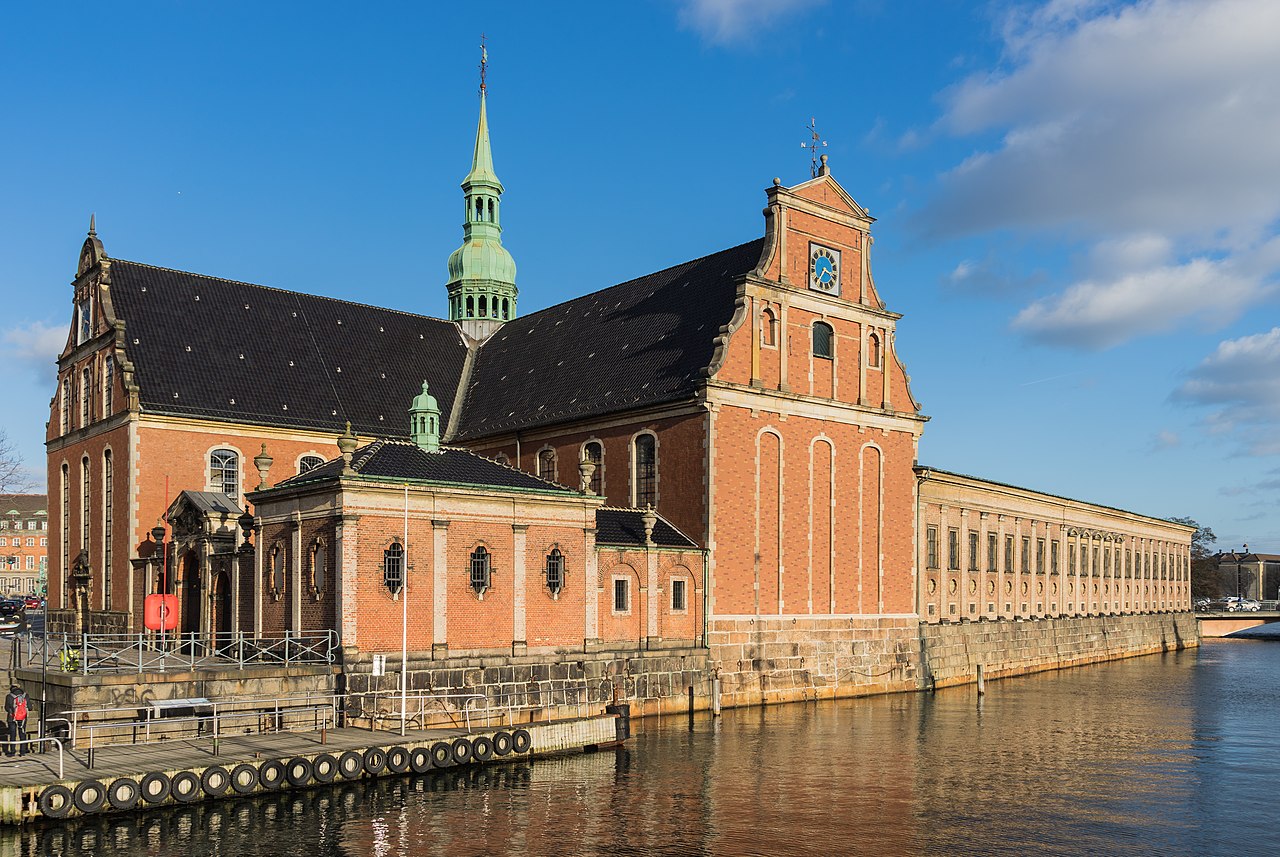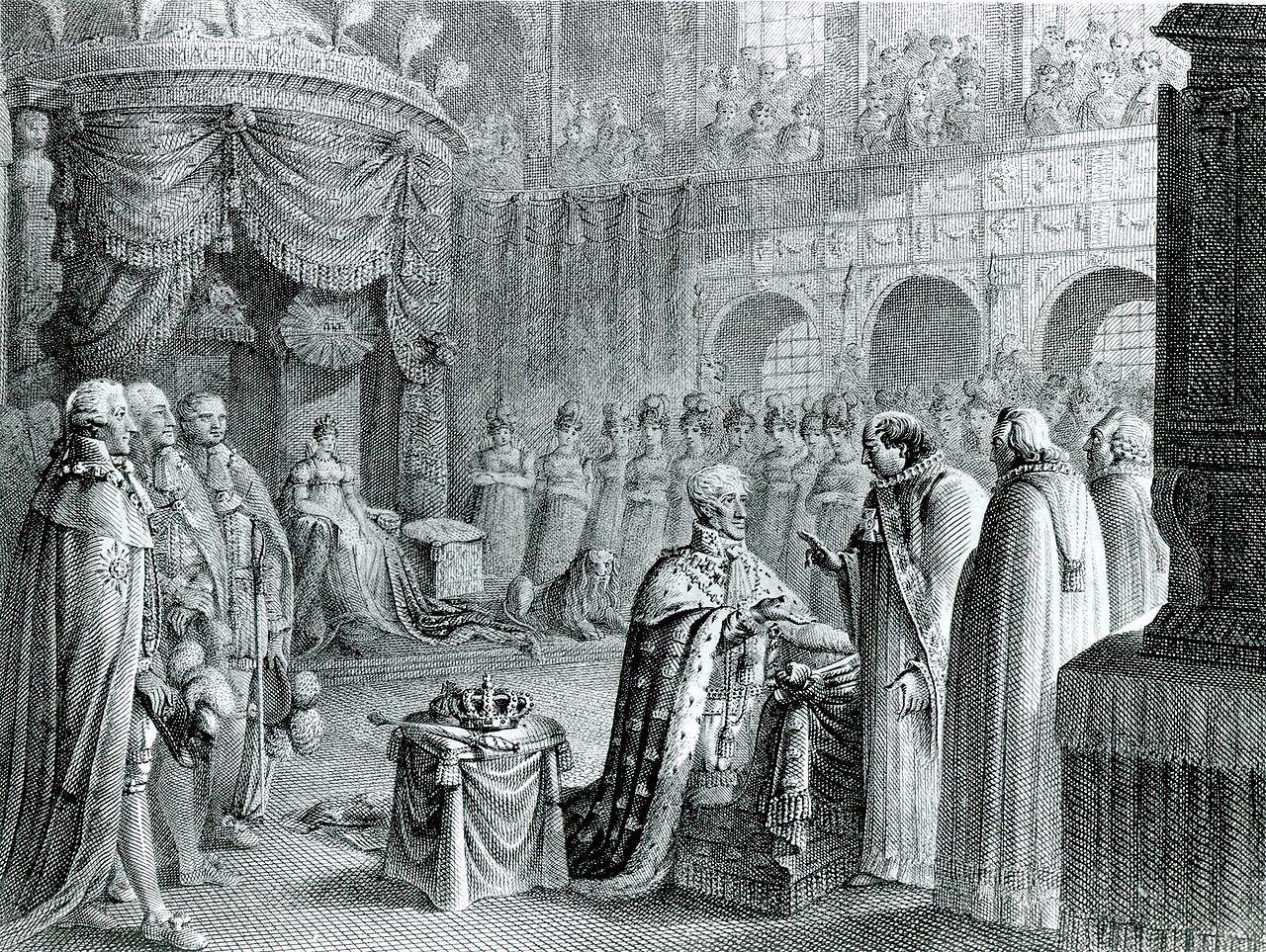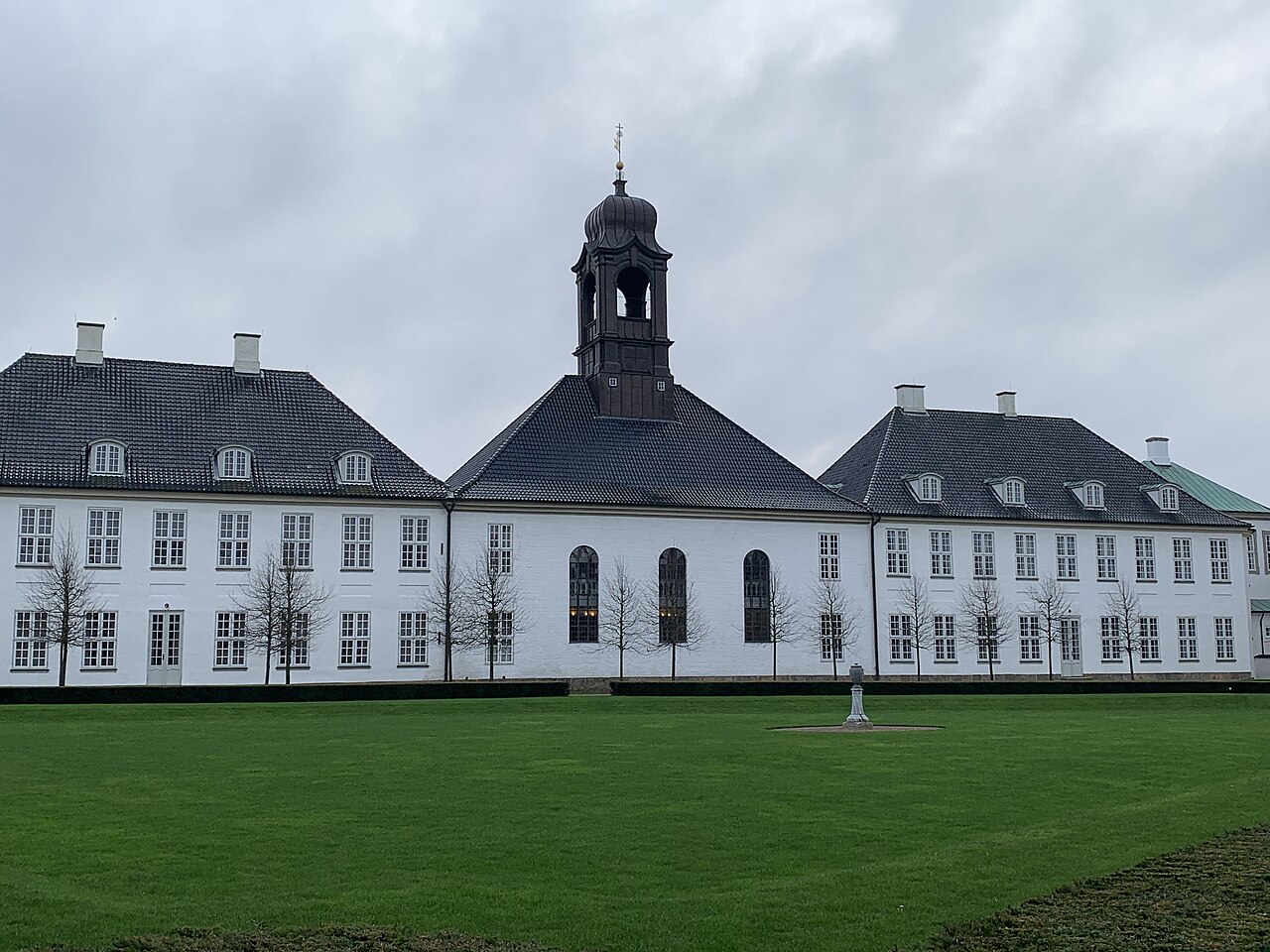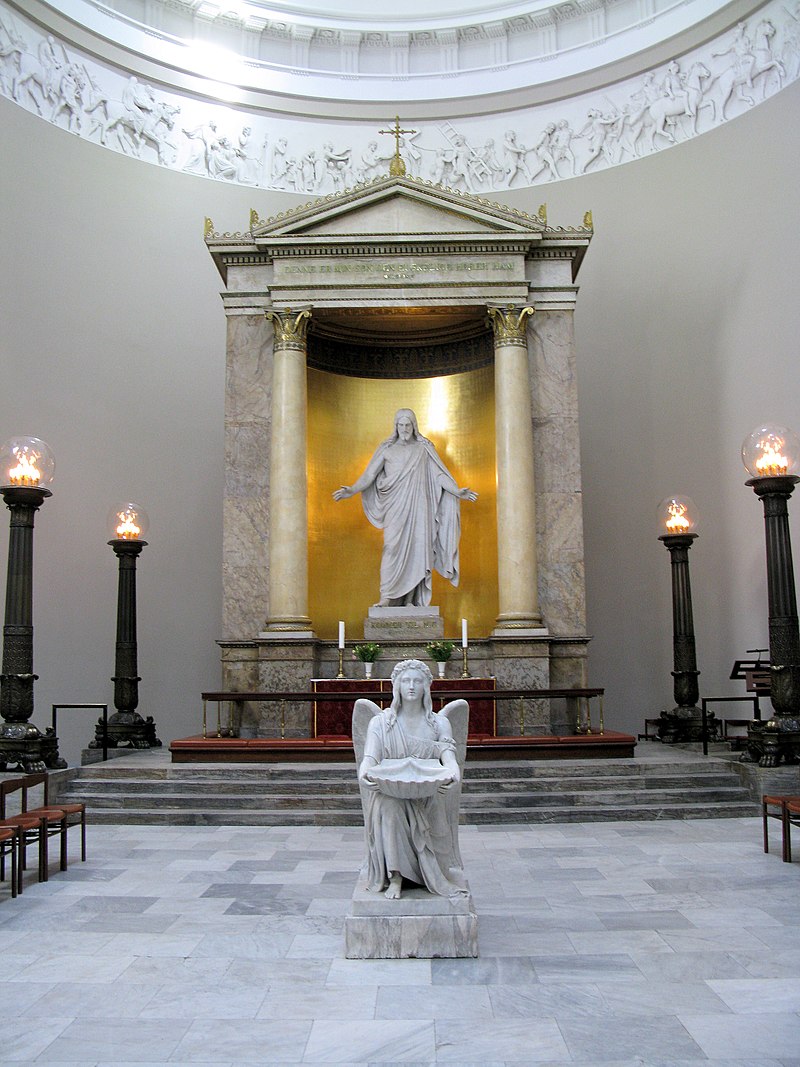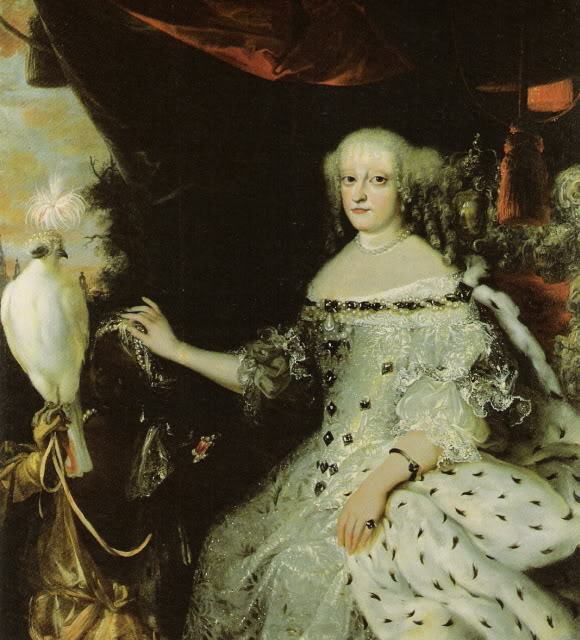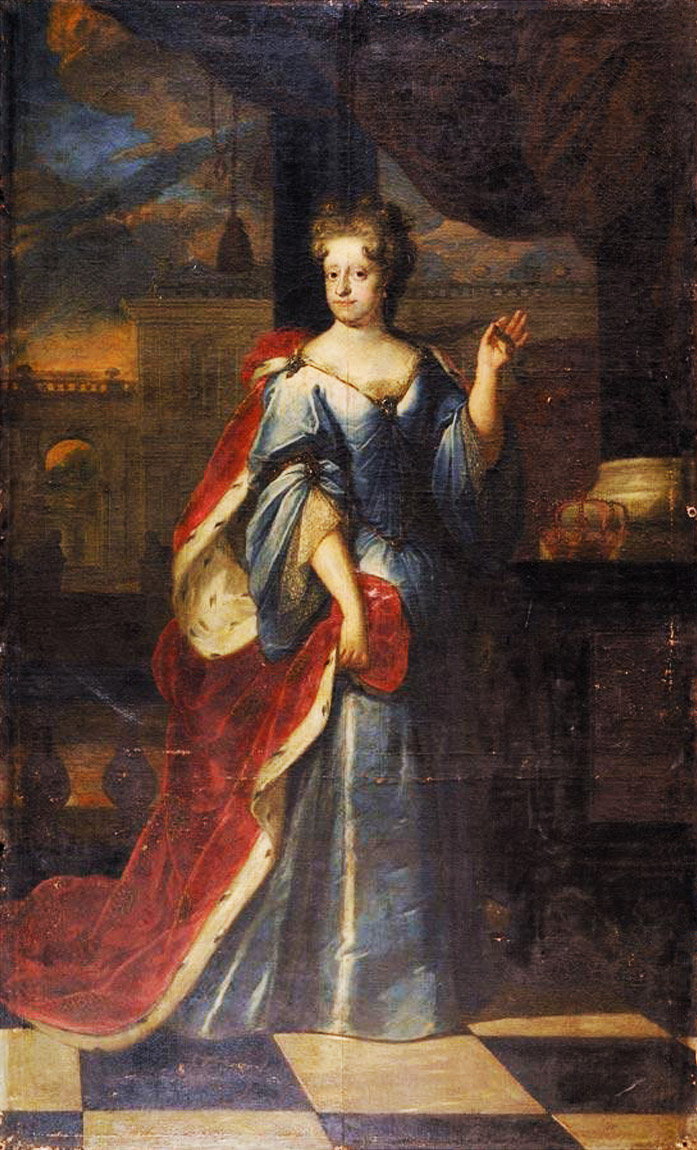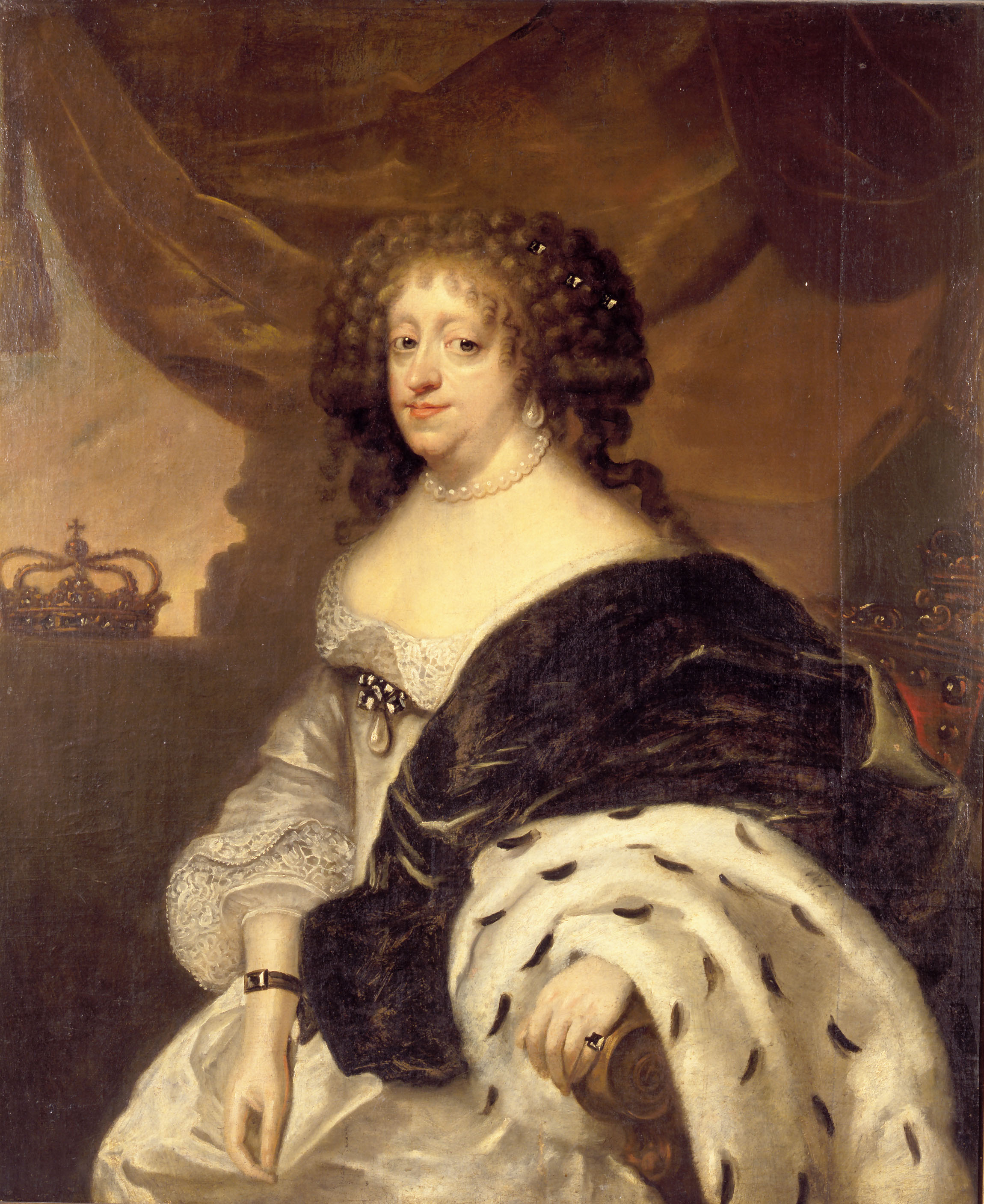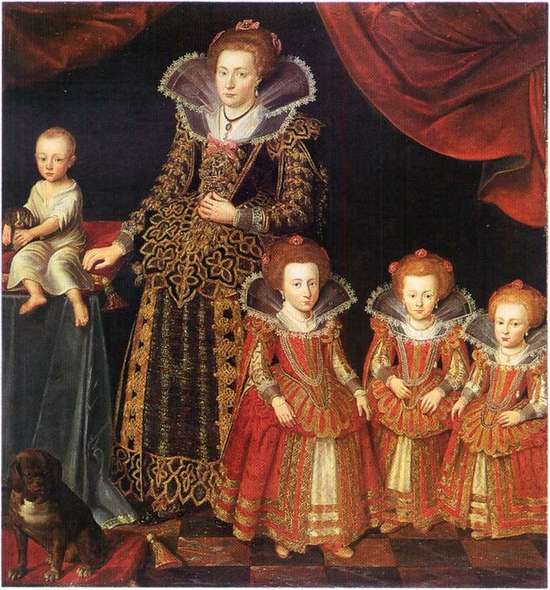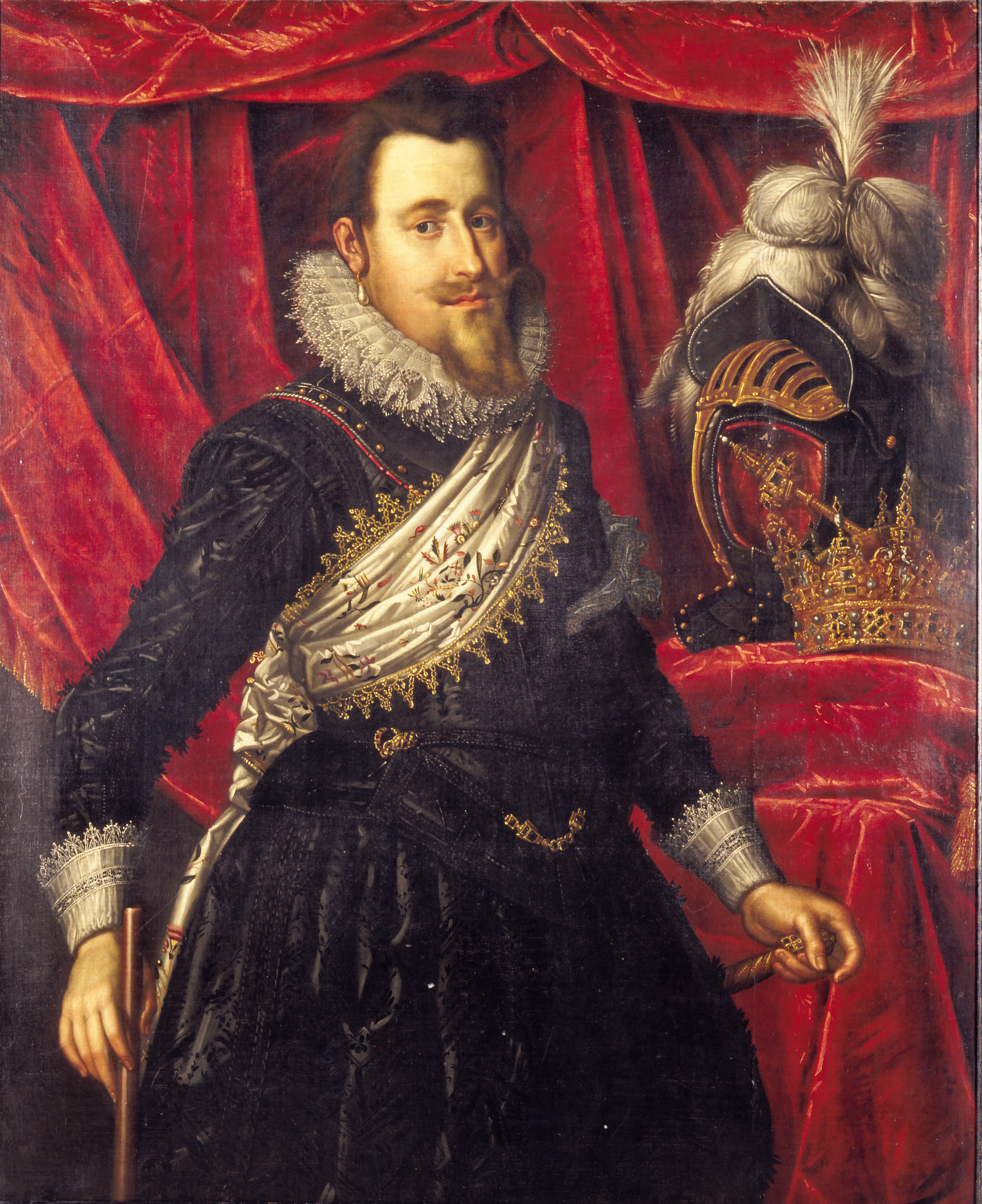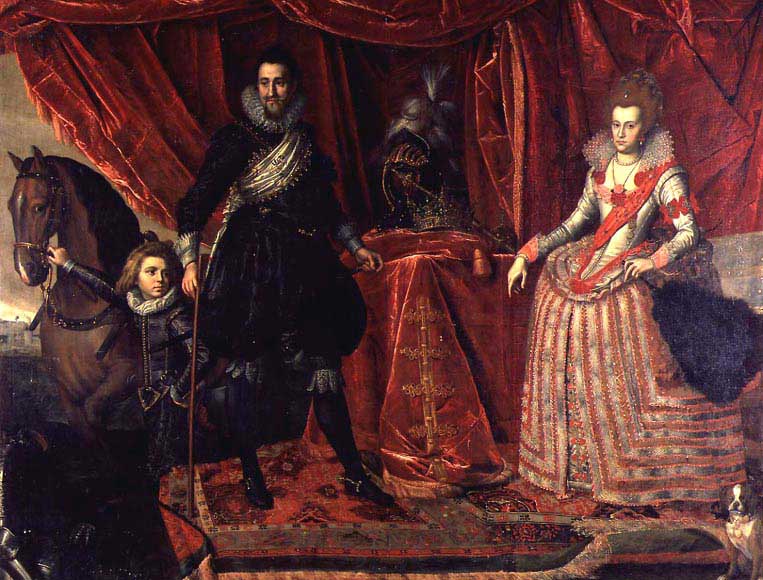by Susan Flantzer
© Unofficial Royalty 2021
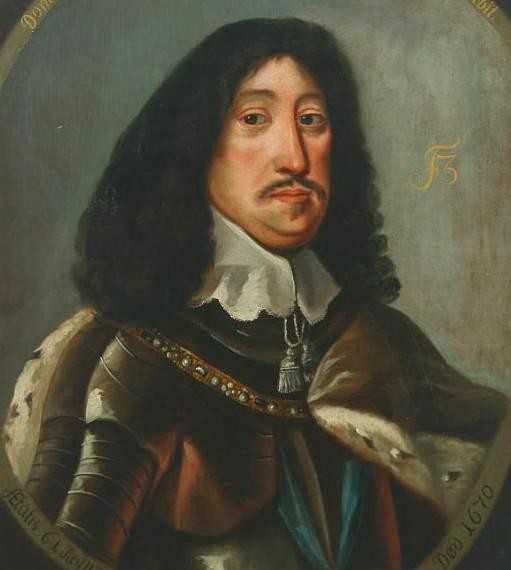
Frederik III, King of Denmark and Norway; Credit – Wikipedia
Frederik III, King of Denmark and Norway was born on March 18, 1609, at Haderslevhus Castle in Haderslev, Denmark. He was the third but the second surviving of the four sons and the fifth but the fourth surviving of the six children of Christian IV, King of Denmark and Norway and his first wife Anna Katharina of Brandenburg. Frederik had an elder brother who had been elected heir apparent in 1608 (Denmark was an elected monarchy at that time) and was expected to succeed their father.
Frederik has five siblings:

Frederik III as a child; Credit – Wikipedia
Frederik III was raised by Beate Huitfeldt, the royal governess of the household of the royal princes, previously maid of honor to Frederik’s grandmother Sophie of Mecklenburg-Güstrow and principal lady-in-waiting to queen Anna Katharina of Brandenburg, Frederik’s mother. He was then educated from 1624 – 1626 at Sorø Academy in Sorø, Denmark, founded by his father, and then studied in France and the Netherlands from 1629 – 1630.
Frederik III’s mother Anna Katharina died on April 8, 1612, when Frederik was only three-years-old. His father King Christian IV had several mistresses and several illegitimate children who were Frederik’s half-siblings.
With Kirsten Madsdatter, the chambermaid of Christian IV’s first wife Anna Katharina:
With Karen Andersdatter, mistress from 1613-1616:
- Dorothea Elisabeth Gyldenløve (1613–1615), died in childhood
- Hans Ulrik Gyldenløve (link in Danish) (1615–1645), married Regitze Grubbe, no children
With Vibeke Kruse, the chambermaid of Christian IV’s second wife Kirsten Munk and Chrisitan IV’s official mistress from 1629 until he died in 1648:
In 1615, when Frederik was six years old, his father Christian IV married 18-year-old Kirsten Munk, from a wealthy, untitled noble Danish family. Their marriage would be morganatic, but legal, Kirsten would receive properties in her name and would be assured of a widow’s pension. Kirsten was not the Queen due to the morganatic marriage and was given the title Countess of Schleswig-Holstein. Christian IV and Kirsten’s ten children married into the Danish nobility, were styled Count and Countess of Schleswig-Holstein, and did not have succession rights.
Frederik III had ten half-siblings from his father’s second marriage to Kirsten Munk:
- Countess Anne Cathrine of Schleswig-Holstein (1618 -1633), died as a teenager
- Countess Sophie Elisabeth of Schleswig-Holstein (1619- 1657), married Christian von Pentz
- Countess Leonora Christina of Schleswig-Holstein (1621 – 1698), married Count Corfitz Ulfeldt, had ten children
- Count Valdemar Christian of Schleswig-Holstein (1622 – 1656), killed in battle
- Countess Elisabeth Auguste of Schleswig-Holstein (1623 – 1677), married Hans Lindenov
- Count Frederik Christian of Schleswig-Holstein (1625-1627), died in childhood
- Countess Christiane of Schleswig-Holstein, twin of Hedwig (1626 – 1670), married Hannibal Sehested
- Countess Hedwig of Schleswig-Holstein, twin of Christiane (1626 – 1678), married Ebbe Ulfeldt
- Countess Maria Katharina of Schleswig-Holstein (born and died 1628), died in infancy
- Countess Dorothea Elisabeth of Schleswig-Holstein (1629 – 1687), converted to Roman Catholicism and became a nun
Because Frederik III had an elder brother who was the heir to the throne, his father King Christian IV sought to provide him with a pathway to his future and also used Frederik to gain influence in the northern German areas of the Holy Roman Empire. Despite being christened a Protestant, Frederik became the administrator of the Prince-Archbishopric of Bremen and the Prince-Bishopric of Verden. In 1647, Friedrich was appointed governor of the Duchies of Schleswig and Holstein. He gained considerable experience as an administrator through these positions.
Before his marriage, Frederik III had one illegitimate son with his mistress Margrethe Pape, who later married county administrator and state councilor Daniel Hausmann and had three children. In 1683, Frederik III’s son Christian V granted Margrethe Pape the title Baroness of Løvendal. Frederik and Margrethe’s son Ulrik Frederik Gyldenløve was Governor-General of Norway (1664 – 1699) and was the commanding general in Norway during the Scanian War (1675 – 1679). Illegitimate children of Danish kings used the surname Gyldenløve (Golden Love).
- Ulrik Frederik Gyldenløve, Count of Laurvig (1638 – 1704), married (1) Sophie Urne, had two sons, divorced (2) Marie Grubbe, no children, divorced (3) Countess Antoinette Augusta von Aldenburg, had three daughters and one son

Frederik III and Sophie Amalie of Brunswick-Lüneburg, circa 1643; Credit – Wikipedia
In the 1630s, there had been unsuccessful negotiations for a marriage between Frederik III and Queen Christina of Sweden. Finally, in March 1640, 31-year-old Frederik was betrothed to 12-year-old Sophie Amalie of Brunswick-Lüneburg, daughter of Georg, Duke of Brunswick-Lüneburg and Anna Eleonore of Hesse-Darmstadt. Because of the bride’s young age, the marriage was delayed. On October 1, 1643, at Glücksborg Castle in Glücksborg, Duchy of Schleswig, now in the German state of Schleswig-Holstein, Frederik III and Sophie Amalie of Brunswick-Lüneburg were married.

Frederik III’s five eldest children: left to right: Wilhelmina Ernestina, Anna Sophia, Frederika Amalia holding Frederik and Christian; Credit – Wikipedia
Frederik III and Sophie Amalie of Brunswick-Lüneburg had eight children:
- Christian V, King of Denmark and Norway (1646 – 1699), married Charlotte Amalie of Hesse-Kassel, had seven children including Frederik IV, King of Denmark and Norway
- Anna Sophia (1647 – 1717), married Johann Georg III, Elector of Saxony, had two sons
- Frederika Amalia (1649 – 1704), married Christian Albrecht, Duke of Holstein-Gottorp, had two sons and two daughters
- Wilhelmina Ernestina (1650 – 1706), married Karl II, Elector Palatine, no children
- Frederik (1651 – 1652), died in infancy
- Jørgen (George) (1653 – 1708), married Queen Anne of Great Britain, George’s wife Queen Anne had 17 pregnancies with only five children being born alive. Two died on the day of their birth, two died at less than two-years-old within six days of each other from smallpox, and one died at age 11.
- Ulrika Eleonora (1656 – 1693), married King Karl XI of Sweden, had seven children including King Karl XII of Sweden and Queen Ulrika Eleonora of Sweden
- Dorothea (1657 – 1658), died in infancy
Frederik III and Sophie Amalie lived in the Prince-Archbishopric of Bremen and the Duchies of Schleswig and Holstein until a sudden event changed their lives. On June 2, 1647, Frederik’s 44-year-old childless elder brother Christian, Prince-Elect of Denmark and heir apparent to the Norwegian throne, died and his death opened up the possibility for Frederik to be elected heir apparent to the Danish throne. However, when King Christian IV died less than nine months later, on February 28, 1648, Frederik had not yet been elected heir apparent to the Danish throne. After long deliberations between the Danish Estates and the Rigsraadet (royal council), he was finally elected King of Denmark. King Frederik III and Queen Sophie Amalie were crowned on November 23, 1648.
Five of Frederik III’s half-sisters, the daughters of Christian IV and Kirsten Munk, married powerful Danish noblemen, collectively called the Party of the Sons-in-Law, and played important roles in the Danish government from 1648 – 1651. Frederik had a particular problem with his brother-in-law Count Corfitz Ulfeldt, husband of his half-sister Countess Leonora Christina of Schleswig-Holstein. There were rumors that Count Corfitz Ulfeldt was associated with a plot to poison Frederik III and Ulfeldt and his wife left Denmark and settled in Sweden. The plot was proven to be false but Ulfeldt agreed to accept the offer of King Karl X Gustav of Sweden to enter his service because he wanted to humiliate King Frederik III, his wife’s half-brother. Ulfeldt participated in the Swedish invasion of Denmark in the Danish-Swedish War of 1657 – 1658. Kirsten allegedly financially supported the invasion of Denmark by King Karl X Gustav of Sweden. Because of this, the Danish government withdrew the title of Count/Countess of Schleswig-Holstein from Kirsten Munk and her children. Frederik III’s brother-in-law Count Corfitz Ulfeldt is considered the most notorious traitor in Danish history. He was tried in absentia for high treason, his property was confiscated, and his children were banished. Ulfeldt, who was seriously ill, died in 1664 while on the run. Because of her alleged involvement in intrigues of her husband Count Corfitz Ulfeldt, Frederik III’s half-sister Leonora Christina was imprisoned for 22 years as a political prisoner. Only after the death of Frederik III’s wife Queen Sophie Amalie did Leonora Christina gain her freedom.

Homage to King Frederik III in front of Copenhagen Castle on October 18, 1660, after being declared an absolute monarch; Credit – Wikipedia
In 1660, Frederik III used his popularity to end the elective monarchy in favor of a hereditary, absolute monarchy in which the legislature was dissolved and the monarch ruled by decree. This lasted until 1849 when Denmark-Norway became a hereditary, constitutional monarchy. Frederik maintained a lifelong interest in theology, the natural sciences, and Scandinavian history. He was an enthusiastic collector of books and his collection became the foundation for the Royal Library in Copenhagen which he founded in 1648.
Frederik III, King of Denmark and Norway died at the age of 60, after three days of a painful illness, on February 9, 1670, at Copenhagen Castle in Copenhagen, Denmark. His wife Sophie Amalie of Brunswick-Lüneberg survived him by fifteen years, dying on February 20, 1685, aged 56. They were interred with Frederik’s parents in the crypt of Roskilde Cathedral, the traditional burial site of the Danish royal family in Roskilde, Denmark. In 1613, a year after the death of his first wife and Frederik’s mother Anna Katharina of Brandenburg, Christian IV ordered the construction of a new burial chapel because the space inside Roskilde Cathedral for burials was running out. However, the interior of the Christian IV Chapel was not completed until 1866. At that time, the caskets of Christian IV (died 1648), his first wife Anna Katharina of Brandenburg (died 1612), his eldest son and heir apparent Christian who predeceased him (died 1647), his second son who succeeded him as King Frederik III (died 1670); and Frederik III’s wife Sophie Amalie of Brunswick-Lüneberg (died 1685) were placed in the completed Christian IV Chapel.

Christian IV Chapel at Roskilde Cathedral: Caskets front row left to right: Anna Katharina, Christian IV, Christian, Prince-Elect; back row left to right: Sophie Amalie of Brunswick-Lüneberg, Frederik III; Photo Credit – © Susan Flantzer
This article is the intellectual property of Unofficial Royalty and is NOT TO BE COPIED, EDITED, OR POSTED IN ANY FORM ON ANOTHER WEBSITE under any circumstances. It is permissible to use a link that directs to Unofficial Royalty.
Kingdom of Denmark Resources at Unofficial Royalty
Works Cited
- Da.wikipedia.org. 2021. Frederik 3.. [online] Available at: <https://da.wikipedia.org/wiki/Frederik_3.> [Accessed 11 March 2021].
- De.wikipedia.org. 2021. Friedrich III. (Dänemark und Norwegen). [online] Available at: <https://de.wikipedia.org/wiki/Friedrich_III._(D%C3%A4nemark_und_Norwegen)> [Accessed 11 March 2021].
- En.wikipedia.org. 2021. Frederick III of Denmark. [online] Available at: <https://en.wikipedia.org/wiki/Frederick_III_of_Denmark> [Accessed 11 March 2021].
- Flantzer, Susan. 2021. Christian IV, King of Denmark and Norway. [online] Available at: https://www.unofficialroyalty.com/christian-iv-king-of-denmark-and-norway/> [Accessed 11 March 2021].
